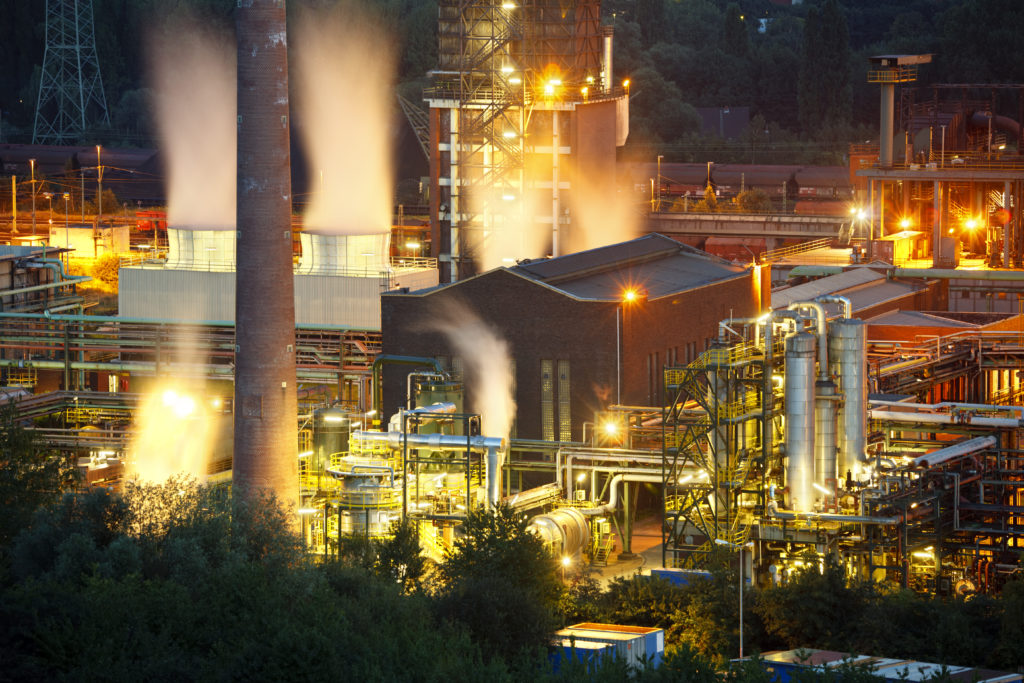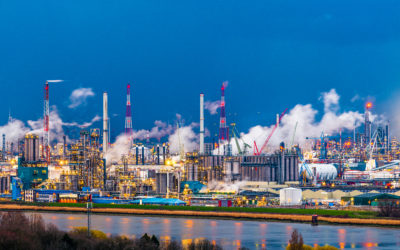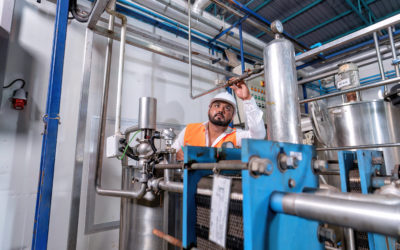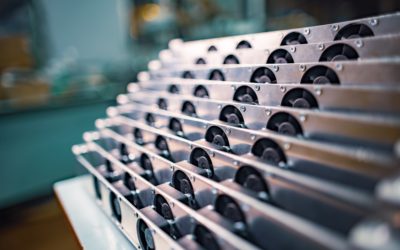Stop Selective Leaching in Its Tracks
Selective leaching, also known as de-alloying, is a form of corrosion where one element in an alloy is selectively removed, leaving the remaining structure weakened. This type of corrosion is essentially galvanic corrosion on a microscopic scale, where elements like zinc, aluminum, or nickel are leached from an alloy due to exposure to specific corrosive environments. For example, de-zincification occurs when zinc is removed from brass, often in stagnant waters, leaving behind weakened copper. Similarly, under certain conditions, de-aluminiumification and de-nickelification can occur in aluminum brass and cupronickel alloys.
While selective leaching can significantly compromise the integrity of metals, effective surface treatments like HeatX can provide a robust solution to protect against this type of corrosion.
How Does Selective Leaching Affect Heat Exchangers?
Heat exchangers, commonly used in power generation, chemical processing, and HVAC industries, rely on various metal alloys for efficient heat transfer. These alloys may include brass, aluminum brass, and cupronickel, which are susceptible to selective leaching under certain conditions. When one component of the alloy is leached out, it leaves the metal weaker and more prone to further damage.
For instance, de-zincification in brass heat exchanger tubes can cause significant problems. When the zinc is removed, the remaining metal becomes more fragile, especially under high-flow conditions. In one reported case, yellow brass tubes in a shell-and-tube heat exchanger experienced severe fouling and plugging, which led to increased flow velocity and turbulence in some sections. This accelerated the erosion of already weakened areas, resulting in the rapid deterioration of the tubing.
How Can Coatings Help Prevent Selective Leaching?
Applying a coating is a proven method for preventing selective leaching by creating a barrier that protects the metal from direct exposure to corrosive agents. Coatings can significantly reduce the likelihood of de-alloying by isolating the alloy from the surrounding environment. Here are some common coating strategies:
- Non-Conductive Coatings: These coatings, such as polymer-based paints or epoxies, form a physical barrier that prevents corrosive substances from reaching the metal surface.
- Sacrificial Coatings: Applying a layer of metal that corrodes preferentially can protect the underlying alloy. For instance, zinc coatings can act as a sacrificial layer to protect brass components.
- Specialized High-Performance Coatings: These coatings are designed to withstand extreme conditions, such as high temperatures, pressure, or acidic environments.
While coatings can be effective, choosing the right surface treatment is crucial for ensuring long-term protection in challenging environments.
HeatX: A Cutting-Edge Solution for Corrosion Prevention in Heat Exchangers
HeatX by Oceanit is an advanced surface treatment designed specifically to protect metal surfaces in heat exchangers and other industrial equipment. It is particularly effective in preventing selective leaching, offering the following benefits:
- Barrier Protection: HeatX creates a protective layer that significantly reduces the risk of selective leaching by isolating the metal surface from corrosive agents. This makes it ideal for applications involving brass, aluminum brass, and cupronickel alloys.
- Enhanced Durability: By preventing the removal of critical alloying elements, HeatX maintains the structural integrity of the metal over time. This is especially important in heat exchangers, where even minor weakening can lead to severe erosion and equipment failure.
- Versatility Across Conditions: HeatX is effective in various environments, including stagnant waters, acidic solutions, and high heat flux areas, making it suitable for a wide range of industrial applications. It can withstand extreme temperatures and harsh chemicals, providing a reliable defense against de-alloying.
- Cost-Effective Maintenance: With its superior corrosion protection, HeatX reduces the frequency of maintenance and equipment replacement, resulting in significant cost savings for operators.
Why HeatX is Essential for Heat Exchanger Protection
Heat exchangers are critical components in numerous industries, and their efficiency and reliability depend on maintaining the integrity of the metal surfaces involved. Selective leaching, if not properly addressed, can lead to costly equipment failures and downtime. HeatX surface treatment provides an effective and practical solution, offering robust corrosion protection that extends the life of heat exchanger components.
By preventing issues such as de-zincification, de-aluminiumification, and de-nickelification, HeatX ensures that heat exchangers can operate efficiently and safely, even in the most aggressive environments. This cutting-edge technology goes beyond standard coatings, delivering comprehensive protection that keeps your equipment in top condition.
Conclusion
Selective leaching is a serious issue that can weaken metal alloys used in heat exchangers, leading to erosion and equipment failure. While traditional coatings can help prevent this type of corrosion, advanced solutions like HeatX offer superior protection. HeatX creates a durable barrier that prevents corrosive substances from reaching the metal surface, enhancing durability and reducing maintenance costs.
For industries that depend on reliable heat exchanger performance, HeatX is an essential tool for combating selective leaching and ensuring long-term equipment health.
Protect your heat exchangers with HeatX, which is an advanced surface treatment for preventing selective leaching and corrosion. Reach out to learn more about HeatX benefits from the experts.



